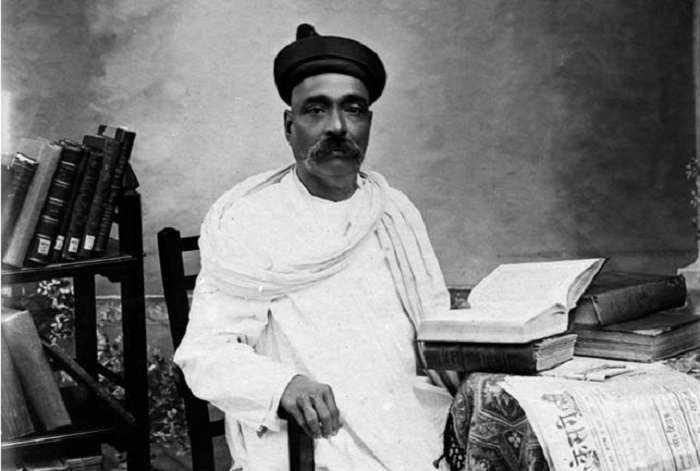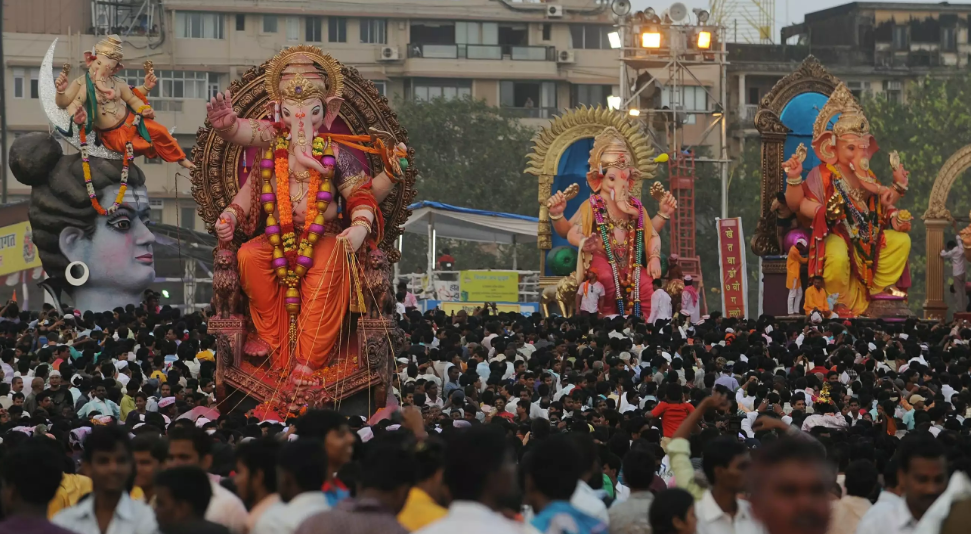
Do You Know That Lokamanya Bal Gangadhar Tilak Is The Architect Of Present Day Ganesh Chathurthi Celebrations? Here’s Why!
Ganesh Chaturthi is one of the most resplendent festivals celebrated in India, especially in the state of Maharashtra. As millions in Maharashtra observe the largest festival of Ganesh Chaturthi in the state, it is difficult to believe that the celebrations, at least in its current form, are just over a century old.
Over time, the festival is celebrated with the same passion in many parts of south India and Gujarat. In Maharashtra, we can see thousands of gigantic idols of Lord Ganesh are immersed by huge processions of worshipers shouting, Ganpati Bapa Morya.

The Hindu festival in honor of the elephant-headed god is primarily celebrated in homes and in public by local community groups or mandals who install images of Ganesha in their homes and pandals.
Ganesh Chaturthi was observed after the Maratha empire was set up by Chhatrapati Shivaji in the 16th century and it was an important day in the festival calendar of the Peshwas, the prime ministers of the Maratha rulers, but was largely confined to individual homes. Bal Gangadhar Tilak, nationalist and ‘The Father of Indian Unrest’ as described by the British, was the man behind turning a private, household Ganesh Chaturthi celebration to a gala event.
Till 1893, Ganesh Chaturthi celebrations were a private affair, not done on a public scale. People used to celebrate it in a traditional manner. It was Lokmanya Tilak who popularized Ganesh Chaturthi as a national festival, after visualizing its cultural importance. The year 1893 brought a major change in the celebration of Ganesh Chaturthi.

It was in this year that Lokmanya Tilak, an Indian nationalist, social reformer and freedom fighter reformed the annual Ganesh festival, from being a private celebration into a grand public event. The reason for this was to enhance the sense of belongingness as well as togetherness among the citizens.
It was also done with an aim to build a new grassroots unity between the Brahmins and the non-Brahmins. The streets of Mumbai and Pune turned into venues for the 10-day celebrations and huge gatherings of devotees.
“Tilak channelized the patriotic spirit by bringing the household Ganapati out onto the streets of Pune. He was able to bring a feeling of unity among the masses against the British through the festive fervor as opposed to a political gathering that the British would not allow,” Tukaram Raut, treasurer of Brihanmumbai Sarvajanik Ganeshotsav Samanvay Samiti (BSGSS), said.
There was a time when the festival meant everything to the people because their freedom depended on it. “Within a decade, the spirit of the festival spread like wildfire with mandals coming up in small pockets at Dadar, Parel, and Girgaum. People from different religions finally had 10 days to interact with each other without the British beating down on them,” Raut said.

Bal Gangadhar Tilak was the first person to install large public images of Ganesha in pavilions and he was the one who established the practice of submerging all the public images on the tenth day of the festival. Ganesh Chaturthi soon started seeing community participation and involvement, in the form of cultural events.
It also served as a meeting point for common people of all castes and communities, at a time when social and political gatherings were forbidden by the British Rule. One of Tilak’s strongest movements to evoke nationalism, through religious passions, was the organization of Ganesh Chaturthi in Maharashtra, which inspired feelings of Hindu unity in the state.
Timeline:
1892 – One of the stalwarts of the freedom movement, Bal Gangadhar Tilak, brought a revival of the patriotic spirit of India by bringing the household Ganapati out onto the streets of Pune.
1893 – Tilak decided to bring the festival to then Bombay, where the first and oldest Mandal Keshavi Naik Chawl Sarvajanik Ganeshotsav Mandal was set up at Girgaum in 1893.

1890-1920 – Cultural events like dance dramas, musical nights, and religious gatherings were organized with central themes such as independence and nationalism.
1940-50 – While the festival rituals continued to be simple, themes related to the first and second World War were depicted during the festival.
1960s – The festival took a political turn post-independence, with an increased focus on the Hindu culture, Mahabharata and Ramayana were enacted in plays and reflected in essay writing and drawing competitions, in addition, to dance programs over the 11 days of the festival.
1970-80 – Black-and-white war films were the highlight of the festivals. Themes revolved around the China and Pakistan wars, and nationalism.

1982 – An umbrella body for mandals was formed after pressure from the state government regarding increased conflicts between different groups. The first count of total Sarvajanik mandals in the Bombay was 1,340 up to Mahim (suburbs did not exist).
1995 – Count goes up to 3,000 Sarvajanik mandals.
2008 – Number increases to 5,000. By 2012, there are 6,500 mandals and 11,756 by 2016.
This is how Lokamanya Bal Gangadhar Tilak became the architect of present day Ganesh Chathurthi celebrations.